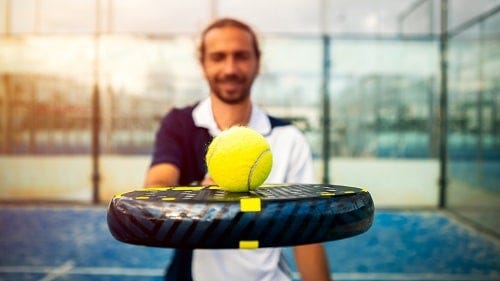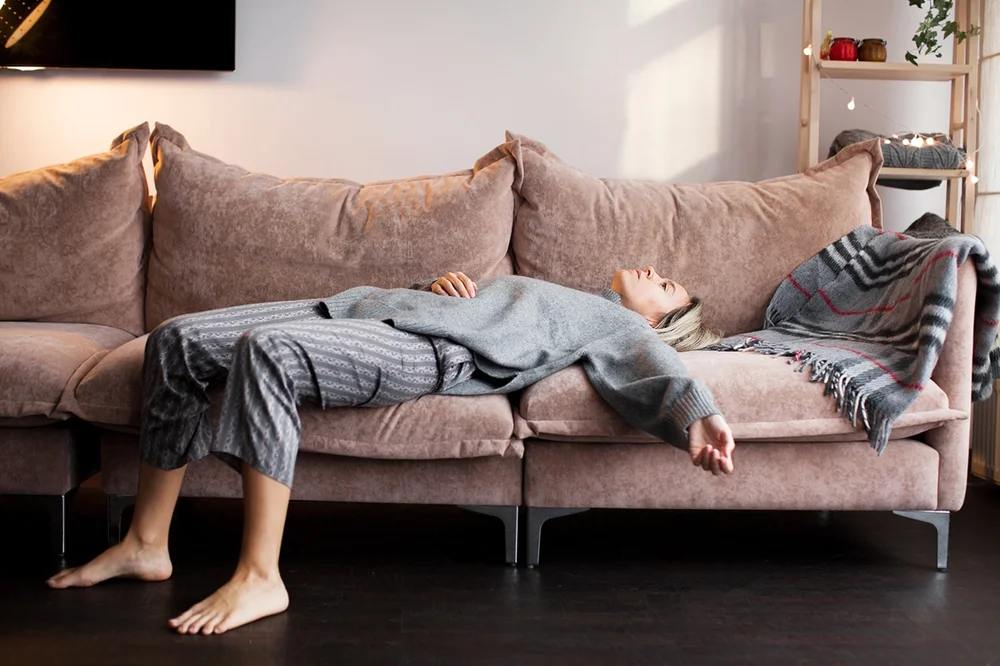The Ultimate Guide to Padel: What You Need to Know Before Hitting the Court
Medically Reviewed by Dr. Nicole Avena
Maybe you’ve been swept up in the pickleball craze over the last few years. The popular, net-based sport, which is a fast-paced blend of tennis and ping-pong, is played at least once a year by an estimated 4.2 million Americans, according to the Sports & Fitness Industry Association.
But another racket sport is now giving pickleball a run for its money. It’s called padel (pronounced “puh-dell”) and it’s coming to a court near you.
From understanding the rules to choosing the right equipment, here’s what you need to know about this emerging sport.
What is Padel?
Padel is a fast-growing sport that’s gaining popularity all around the world. However, many people are still unfamiliar with this unique racket sport and may not know much about its history and origins. Let’s take a closer look at the roots of padel and how it’s different than pickleball.

Padel vs Pickleball
Padel and pickleball are both racket sports that have their own unique histories and characteristics.
Padel
Padel is a fast-paced racket sport that originated in Mexico in the late 1960s. It was created by Enrique Corcuera, who wanted to design a game suitable for players of all ages and skill levels. The sport quickly gained popularity in Spain, where it’s now one of the most widely played sports.
Padel is played on a smaller court compared to tennis or squash, measuring 20m x 10m. The court has glass walls on three sides and wire mesh fencing on the fourth side. The surface of the court is either grass, artificial turf, or concrete.
Players use a solid paddle made of fiberglass or carbon fiber to hit a ball over the net. Padel balls are pressurized and often have a harder bounce compared to the plastic wiffle balls used in pickleball.
Like the scoring rules in tennis, points are won when the opponent fails to return the ball within the boundaries of their opponent’s side.
Padel is relatively new in the U.S. and doesn’t have as well-established a player base a pickleball. However, it tends to be more popular among younger players due to its faster pace and smaller court size.
Pickleball
Pickleball was created on Bainbridge Island in Washington State in 1965 by Joel Pritchard with his friends Bill Bell and Barney McCallum. It started as an improvised game using table tennis paddles and wiffle balls because there was no other sports equipment on hand. The game spread quickly, and in 1976, the first official pickleball tournament was held.
Pickleball is played on a badminton-sized court with a net in the middle that’s slightly higher than a tennis net. The court measures 44ft x 20ft and has boundary lines like those in tennis. The playing surface can be either concrete or asphalt.
Players use smaller paddles made of wood, composite materials, or graphite and hit a perforated plastic ball over the net. Pickleball uses a rally-based scoring system where only the serving team can score points. Matches are played to 11 points.
Pickleball tends to attract a slightly older demographic due to its slower pace and lower-impact nature compared to other racket sports like tennis or squash.
While padel and pickleball may share some similarities, such as their use of paddles and nets, they’re distinct sports with their own unique histories, rules, and equipment. Depending on personal preferences, players may find one sport more suitable to their liking; others may enjoy both.
Health Benefits of Playing Padel
Padel combines elements of tennis and squash, making it a fun and exciting game for players of all ages and skill levels. Aside from being an enjoyable activity, playing padel also offers numerous health benefits. Let’s take a look at just a few…
- Full-body Workout
One of the main health benefits of playing padel is its ability to provide a full-body workout. Unlike other sports that mainly focus on certain muscle groups, padel engages multiple muscle groups in your arms, legs, core, and back. The constant movement required in this sport helps strengthen these muscles while also improving your balance and coordination.
- Cardiovascular Health
Padel is also an excellent form of cardiovascular exercise as it involves running, hitting the ball with your racket, and changing direction frequently. This continuous movement can help raise the heart rate and improve blood flow throughout your body.
- Weight Loss
In addition to being a great cardiovascular workout, playing padel also can help you burn some calories. This makes padel an effective sport for those looking to maintain a healthy weight or lose excess pounds.
- Joint Health
The low-impact nature of padel makes it a suitable sport for players of all ages, including those with joint problems. The slow-moving rubber ball and smaller court size help put less strain on the joints compared to sports like tennis or running. This can be beneficial for individuals with arthritis or other joint issues and can help improve their overall joint health.
- Stress Reliever
Playing padel may have mood-supporting effects due to the release of endorphins during physical activity. It also offers a distraction from daily stresses and provides an avenue to socialize with friends and meet new people. The constant movement and strategy involved in this sport also can help clear your mind and improve mental focus, leading to reduced feelings of stress and anxiousness.
- Agility and Reflexes
The quick changing direction in padel requires fast reflexes, making it a great way to improve your agility in sports as well as daily activities. Padel also involves hand-eye coordination, which can help with reaction time not only in sports but also in tasks such as driving.
Padel FAQ
As with any new activity, there may be some questions and uncertainties surrounding padel for those who are new to the sport. Here are answers to some frequently asked questions about padel that might help you gain a better understanding of the game.
What is padel?
Padel is a racket sport played on an enclosed court with walls made of glass or concrete. The court size is smaller than a tennis court and it has a net dividing the playing area into two halves. The game can be played as singles (one player per side) or doubles (two players per side).
How do you score in padel?
The object of the game is to hit the ball over the net onto your opponent’s side without them being able to return it. Points are scored in multiples of 15 (15, 30, 40) and must be won by two points, just like tennis scoring.
What equipment do I need for padel?
To play padel, you’ll need a paddle (like a tennis racket but smaller), balls specifically designed for padel (usually yellow and low-density foam), appropriate footwear with good traction on artificial surfaces, and comfortable clothing suitable for physical activity.
Is there a dress code for playing padel?
There’s no specific dress code for padel, but it’s recommended to wear comfortable and breathable clothing. Some clubs may require non-marking shoes to protect the court surface.
How long is a padel game?
A game of padel can vary in length, but on average, it takes around 45 minutes to an hour to complete a full match. However, this can vary depending on the skill level of the players and the pace of the game.
What are the basic rules of padel?
The basic rules of padel are similar to tennis, with a few key differences. Padel is played on an enclosed court with walls. Players can hit the ball off the walls during rallies. The ball can only be hit once before it bounces off the walls or ground, and matches must be won by two points.
Can you play padel indoors?
Yes, you can play padel both indoors and outdoors. Indoor facilities often have artificial turf surfaces or carpet-like courts, while outdoor courts typically have concrete surfaces.
Is padel suitable for children?
Padel can be a great sport for children as it involves less running than tennis and has easier equipment for them to handle. Many padel clubs offer lessons and classes specifically for children, making it a great sport for kids to try.
How can I improve my padel skills?
Regular practice and playing with more experienced players can help improve your padel skills. Also, you can take lessons or clinics from certified instructors at your local padel club.
Is padel an Olympic sport?
Not currently, but there have been discussions about including padel in future Olympic Games. It has been a part of the World Games since 1997 and is recognized by the International Olympic Committee (IOC).
Padel Up!
Though padel is still a relatively unknown sport to many, it has become a popular recreational activity and competitive sport in recent years. With its unique blend of elements from various sports, padel continues to attract new players and fans from around the world. Padel is an inclusive sport that can be enjoyed by people of all ages and skill levels; it offers something for everyone.
There are many reasons why you should consider picking up padel. The fast-paced nature of the game promotes agility, coordination, and reflexes while the social aspect of playing with friends or joining a club can help improve your communication and teamwork skills.
Padel is much easier on your joints compared to sports like tennis or basketball as the court surface is softer and there are no abrupt stops or changes in direction required. This makes it an ideal sport for those who want to stay active without putting too much strain on their bodies. Plus, the constant movement involved in padel is a great way to get some cardio exercise.
Since padel is still growing in popularity around the world, now is the perfect time to get involved. Whether you’re looking for a new way to stay active, want to improve your hand-eye coordination, or just want to have some fun with friends, padel is definitely worth giving a try.
So, grab your racket and balls and head to the nearest court – who knows, you may just fall in love with this exciting game!
At BrainMD, we’re dedicated to providing the highest purity nutrients to improve your physical health and overall well-being. For more information about our full list of brain healthy supplements, please visit us at BrainMD.
These statements have not been evaluated by the FDA. This content is for informational purposes only. It is not meant to substitute for medical or healthcare advice from a physician, nor is it intended to diagnose, treat, cure, or prevent any disease. Consult your healthcare provider before beginning a new health regimen.



